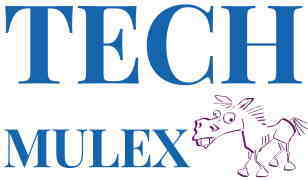A person has a context-dependent memory. It is easier for us to remember something in the environment in which we learned it. This feature of the brain is also used in marketing. Advertising is built so that a person remembers a product in a certain situation. And it is not because he saw a logo or a banner. For example, mortgage ads show young parents who want to move out from older relatives. Such advertising works well for young families without their own apartments, because it describes their case. If you got tired after reading and are willing to rest and chill, then check out TonyBet Canada. Your tiredness will vanish!
Context as the main factor in brand promotion
Success in brand marketing is the recognition of the company in the market. To assess this indicator, marketers ask respondents the question. Which brand in the segment comes to mind first? Most often, they name a market leader or a company that is popular at the moment. For example, thanks to a bright advertising campaign that has just launched or successful situational marketing.
But in the answer, a person does not take into account the situation in which he will buy. For example which coffee shop comes to mind first? He will probably name a chain that is popular in the city. And if you add circumstances and ask about coffee shop comes to mind when you want to work away from home. People will remember coffee shops that are loyal to telecommuters.
So, in 2018, the Starbucks coffee house chain ran a Word, Powerpoint, and Excel campaign. The meaning of this was that Starbucks is not only a place where you can enjoy good coffee, but also a space to work.
Marketing strategies take into account the gender, age, preferences, hobbies, and work of the target audience. But when buying, external circumstances also act on a person: mood, weather, time, and location.
What are the benefits of a situational approach?
It is difficult to overtake the leading brand. Large companies have already won the trust of consumers. You can attract part of the audience of the leading player by occupying a situational niche in which he is least represented.
Let’s take an example from sports. Nike is number one in sports goods. ASICS is not in the top three either. The Japanese manufacturer has taken advantage of Nike’s focus on the trend of wearing sportswear in everyday life and has focused on sneakers for professional athletes.
The main principles of the ASICS design philosophy, including the testing of sneakers by athletes and biomechanical research, the company reinforces with advertising campaigns and other activities.
In the “All Runners Welcome” campaign, we see different marathon runners. Athletes who have not slept all night, but still run. Marathon runners with a perfectly straight posture. Athletes who don’t like to run alone. All of them are united by ASICS sneakers. To support all runners, the company also initiated the creation of an inclusive running community.
If we talk about the results of such a strategy, the Japanese manufacturer is considered one of the world leaders in the running shoe segment.
How to Apply the Situational Approach in Marketing
To understand when a customer buys a product, you need to answer six questions. Let’s do this using the example of curtains that block sunlight.
We describe several situations and prioritize where the brand can inspire the most trust and in which situational niche there is the least competition. For example, blackout curtains are also bought by residents of the Far North in order to sleep comfortably during white nights.
In marketing campaigns, it is worth showing the main purchase stories. A link between the product and the situation should appear in the mind of the consumer.
The popularity of a brand does not indicate whether the buyer will remember it in a certain situation. If the ad shows the circumstances under which the product becomes necessary, at the right time the brain activates memories of the brand.
Using a situational approach, you can lure away a part of the audience of large companies, talk about brand values and build a strong connection with the audience.
